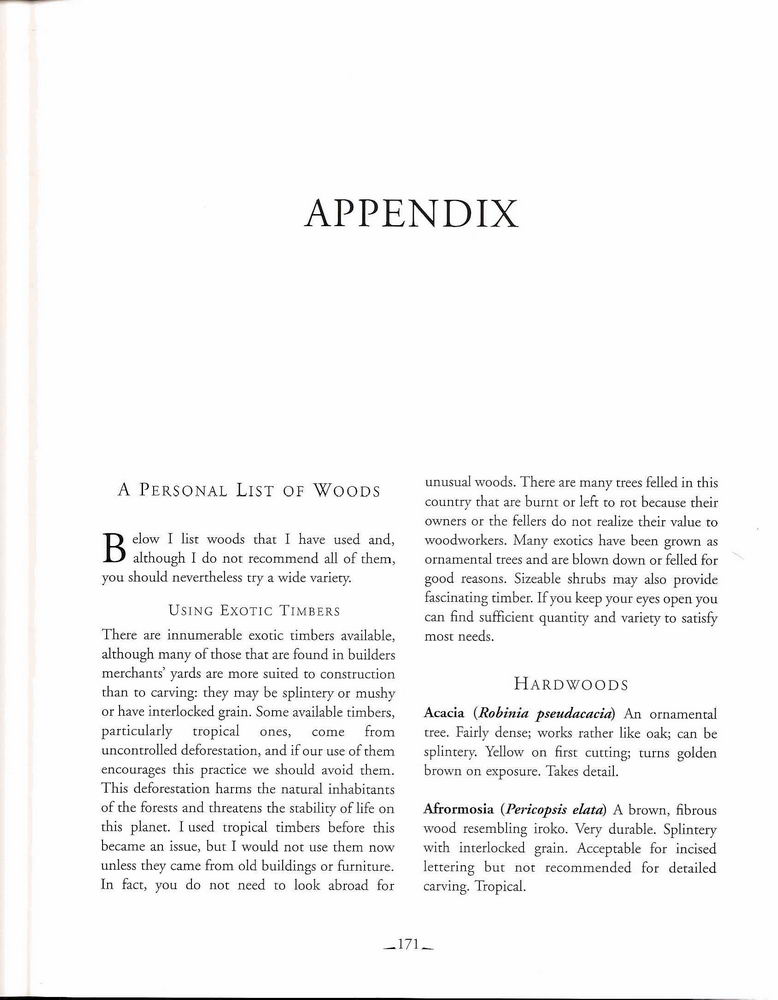essentÊrving±71

APPENDIX
A Personal List of Woods
Below I lisr woods that I have uscd and, although I do not rccommcnd all of them, you should nevercheless try a widc variety.
Using Exotic Timbers
There are innumerable exotic timbers available, although many of those that are found in builders merchants’ yards are morę suited to consrruction than to carving: they may be splintery or mushy or havc interlocked grain. Some available timbers, particularly tropical ones, come from uncontrolled deforestation, and if our use of them encourages this practice wc should avoid them. This deforestation harms the natural inhabitants of the forests and threatens the stability of life on this planet. I uscd tropical timbers before this became an issue, but I would not use them now unless they camc from old buildings or furniture. In fact, you do not need to look abroad for unusual woods. There are many trees felled in this country that are burnt or left to rot because their owners or the fellers do not realizc their value to woodworkers. Many exotics have been grown as ornamental trees and are blown down or felled for good reasons. Sizeable shrubs may also provide fascinating timber. If you keep your eyes open you can find sufficient quantity and variety to satisfy most needs.
Hardwoods
Acacia (Robinia pseudacacia) An ornamental tree. Fairly dense; works rarher like oak; can be splintery. Ycllow on first cutting; turns golden brown on exposure. Takcs detail.
Afrormosia (Pericopsis data) A brown, fibrous wood resembling iroko. Verv durable. Splintery with interlocked grain. Acceptable for incised lettering but not recommended for detailed carving. Tropical.
— 171 _
Wyszukiwarka
Podobne podstrony:
00240 ?e77afc2d2959074307e464c36ca12e 242 Yander Wiel on the Ä…uality of measurements the device can
57120 pp intro04 have mm and Although Jor. Bonomo, thc aucccuful Publisher, cdi tor and author of ma
Word Study 1 Word Study WORD STUDY: Stems and Affixes Below is a list of some commonly occurring ste
Word Study 2 Word Study WORD STUDY: Stems and Affixes Below is a list of some commonly occurring ste
CSG247 236 Complete Spanish Grammar The following is a selected list of verbs that take a person as
f5 2 Netscape - [Marc s List of Great Web Pages] File Edit View Go Bookmarks Options Directory Windo
— 18 — BIBLIOGRAPHIE Abegg F.A., 1940. — List of characters and genc symbols reported for the specie
PROBLEMS OF GEOMORPHOLOGICAL MAPPING Geographical Studies No. 46, Warszawa 1963 LIST OF THE DETAILED
LIST OF ILLUSTRATIONS J. P. B a k k e r 1. The topographic basis
więcej podobnych podstron